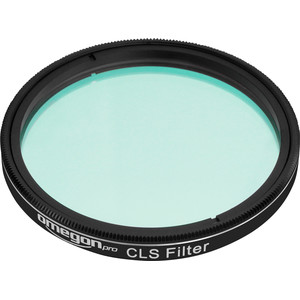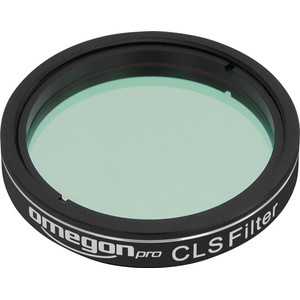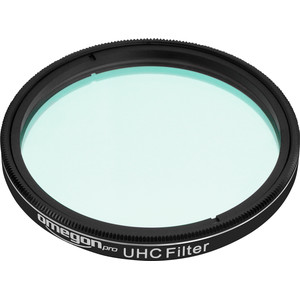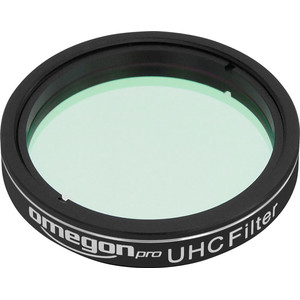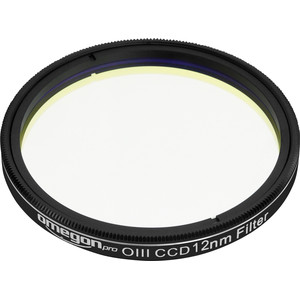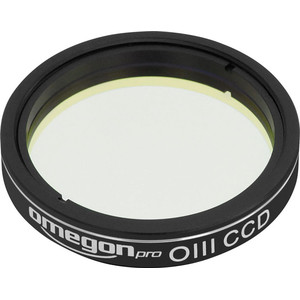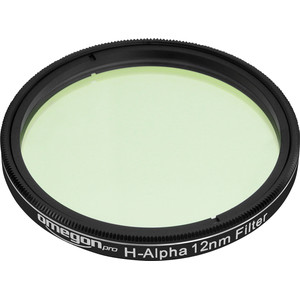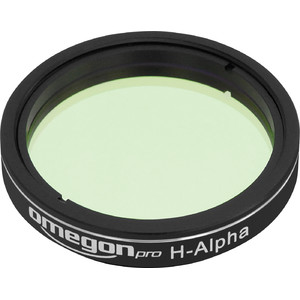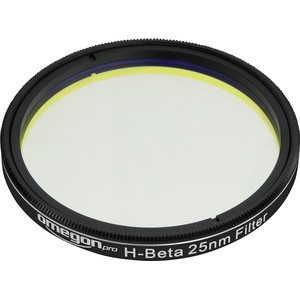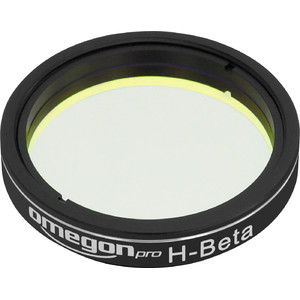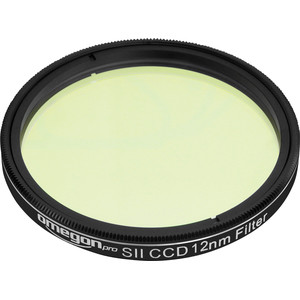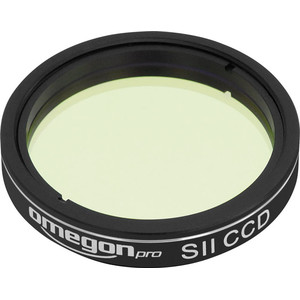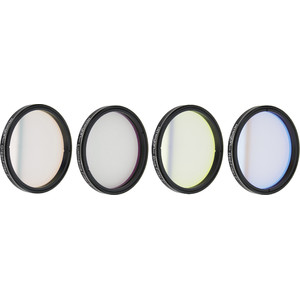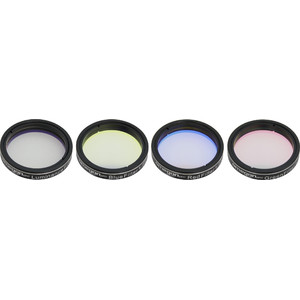Omegon Pro Filters
It is often the case that a deep sky object is only really visible with a filter. We tested Omegon Pro filters both in the field and in the laboratory.
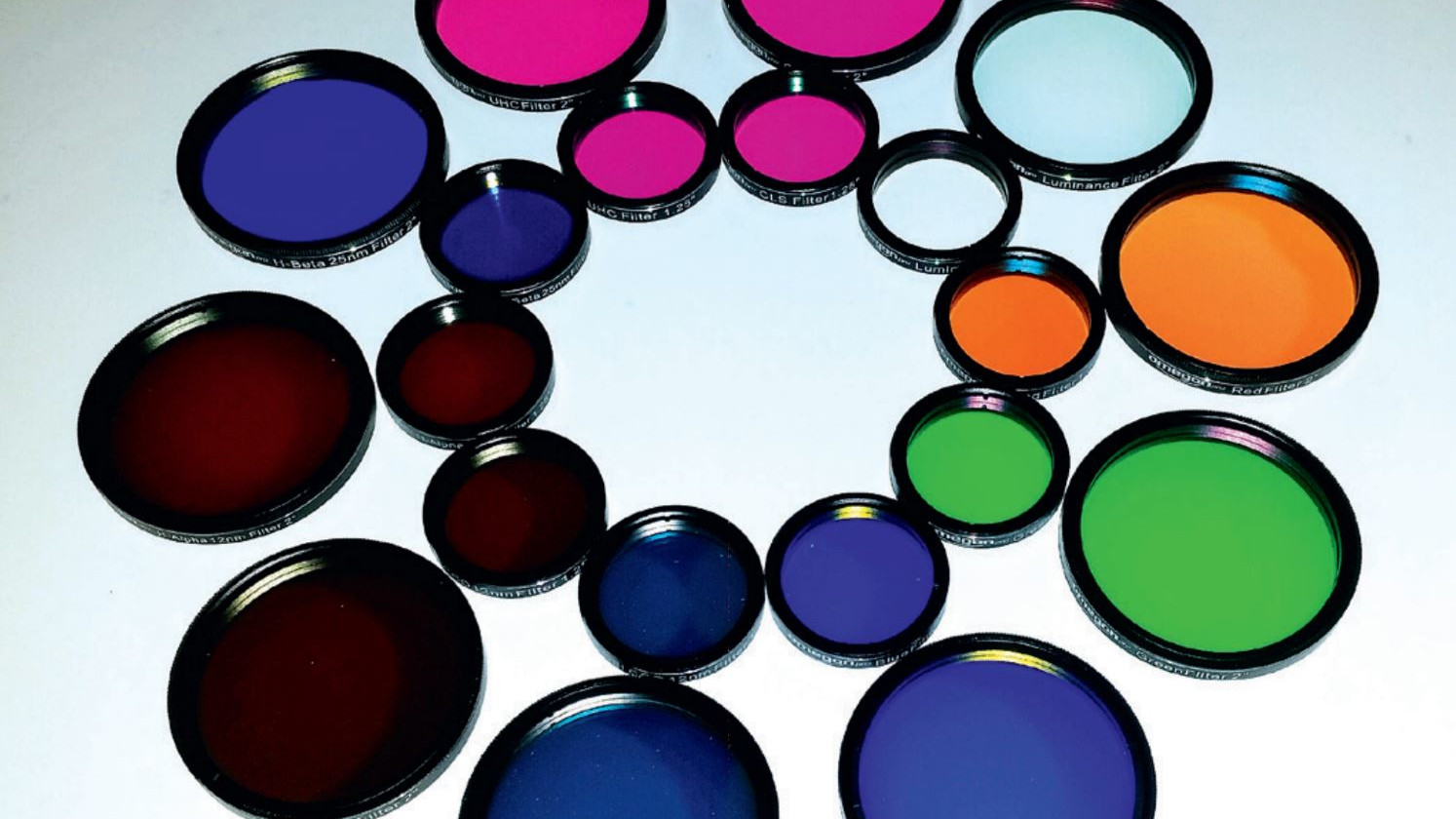 Review from Adventures in Astronomy, December/January 2017, author: Christoph Kunze, André Knöfel
Review from Adventures in Astronomy, December/January 2017, author: Christoph Kunze, André KnöfelThe Omegon Pro filter series in laboratory and field tests
Since mid-2016, Omegon, Astroshop's own brand, has been offering a range of filters called Omegon Pro, to complement the already established Basic and Advanced filter ranges. We tested them in the laboratory and in the field.
Besides the classic LRGB filter set, the Omegon Pro series includes UHC, CLS, Hβ, Hα, OIII CCD and SII CCD filters in 1.25-inch and 2-inch connector sizes. All filters in the series are supplied with a test protocol in the form of a transmission curve which, according to Omegon, is generated separately for each individual filter. This means that every buyer knows exactly what his filter can achieve, as it is well known that variations can occur in every series production. For our test, Omegon provided us with complete sets of 1.25-inch and 2-inch filters.
Tests in the laboratory and in the sky
Our filter tests were divided into two parts: the laboratory test conducted by André Knöfel, in which their transmission was measured with an Agilent Cary Varian 5000 UV-Vis-NIR spectrophotometer, and the field test on objects in the night sky carried out by Christoph Kunze. Due to the available time and weather conditions, practical tests were only possible visually with the LRGB set and the UHC, CLS and OIII filters. Hα, Hβ and SII filters were tested solely in the laboratory.
The filters come well protected - they are delivered in a plastic container, as you would expect. The outer packaging consists of a small bag and a plainly designed cardboard box. The plastic container can be opened easily without the risk of the contents falling victim to gravity. The filters themselves feel relatively heavy for their size, giving a very high-quality impression.
Since handling plays an important role in the dark, it should be mentioned here that all 1.25 inch versions have a smooth frame surface, whereas the 2 inch versions, in contrast, are ribbed. The latter is significantly more advantageous in terms of grip. All the threads are neatly manufactured and smoothly fitted all the eyepieces we used and in a 1.25 inch filter wheel.
LRGB filter
The Omegon Pro LRGB filter show fairly uniform transmission over wide ranges. From red to blue, the transmission decreases only marginally at high wavelengths, which does not affect their use in practice.
There is a small overlap between the colour ranges, the luminance filter is open throughout the RGB range with a medium transmission of 97%, and it reliably blocks the UV and NIR ranges for the usual CCD and DSLR cameras. Halos and reflections arising when using filters are regularly discussed in various Internet forums, as they used to occur when observing bright stars with certain products from various manufacturers.
This effect could only be eliminated by time-consuming image processing. In addition, the parfocal nature of the filter set plays an important role, since refocusing each channel is infeasible. The tests were carried out on Alcor and Mizar with an Imaging Source monochrome DMK, a 1.25 inch filter wheel and an 8 inch f/4 Newtonian. The result showed that there were no reflections and all filters were parfocal.
Narrow band filters
Light pollution is a very common issue in observational astronomy. For this reason, virtually every active observer will have considered the use of astronomy filters, which are supposed to increase the contrast between the object and the background sky. There are now a wealth of so-called city light filters and filters that are supposed to be helpful for visual observation. The two Omegon Pro CLS and UHC filters were tested over five nights under different conditions and at different locations. In preparation for this, we did something a little unusual - we actively sought out poor locations with a certain degree of light pollution: a site directly in the centre of the city of Chemnitz, and another in a suburb close to the city centre – neither exactly comfort zones for visual observers. A 10 inch f/4 Newtonian, an 8 inch f/4 Newtonian, a 120/600 refractor and a 70/350 refractor were used. 1.25 inch Nagler eyepieces and a 2 inch 100° wide-angle eyepiece were used on the f/4 instruments.
A wide variety of eyepieces from the eyepiece kit were used with the refractors. The 1.25 inch filters were inserted in a 5-slot filter wheel, leaving a filter slot empty for comparison purposes. The same objects were observed on each observation night. The observation list consisted of various nebulae and, as an experiment, of galaxies and globular clusters.
Nebulae thanks to filters
As a result of our observations, we were able to determine that both narrowband filters prove their worth. In practice, the impression of a graduation in contrast is quickly apparent – the filter wheel makes this fact very clear. The choice of filter is dependent on the object's surface brightness, the instrument’s aperture, and the level of light pollution. The aforementioned contrast graduation became very clear with the Veil Nebula: using the 10 inch f/4 Newtonian in the city suburb without a filter, a vague elongated nebula could just be made out - an inexperienced observer would probably have overlooked it. Nothing could be seen from the city location.
The CLS filter made the first nebula structures visible at both sites. In addition, it became much more visible against the background sky. The stars appeared green and much fainter with this filter, which was not an issue as the focus was anyway on the object itself. The UHC filter provided a further significant improvement, the sky background appeared almost black and structures became clearer. With the 70/350 refractor, the nebula was visible with the CLS filter, even from of the city centre, although the UHC filter did not bring any improvement here.
All filters provide a distortion-free image without changing the edge sharpness. It is interesting that there are certain situations where a CLS filter works better than a UHC filter. This is noticeable when the air transmission is poor, because then the UHC takes too much away and the lens’ surface brightness reduces accordingly. This observation was confirmed by our astronomer friend Andreas Viertel, who supported the tests on two nights.
See more from the city
Since CLS and UHC filters block the wavelengths of artificial lighting, the next step was to test the gain in contrast with other celestial objects. Theoretically, they should not bring about any improvement, since the surface brightness of galaxies and globular clusters decreases significantly when using filters. We tested the relationship between the decrease in background brightness to the decrease in object brightness. Close to the city, with moderate light pollution, their use is not worthwhile since both brightness levels (the background and the object) decrease to the same extent. The level of light pollution is too low. However, from a city centre location, you can find objects for which the brightness of the background sky decreases more than the surface brightness of the object. This effect could be seen when observing M 81/ M 82.
In the laboratory, both filters showed very similar bandpass curves. The CLS filter extends just a few nanometres more into the green part of the spectrum – where the human eye is most sensitive. What is also striking is that the UHC filter passes more light in the infrared spectrum. This can be important for photography, since CCD sensors are sensitive up to about 1,000nm. Both filters very reliably block the main emission lines of sodium and mercury vapour lamps, which are the main causes of light pollution.
Line filters (Hα, Hβ, OIII and SII)
The laboratory test showed that all of the Pro series line filters achieved close to the half width (FWHM) of the respective transmission range. The Hα filter deviated furthest from the specified value – but at a little more than 13nm FWHM, this is still a top-class filter. The transmission directly on the Hα line is 90% – a pretty good value. All other filters deliver results within the advertised half width or even better. The Hβ filter demonstrated noticeably high transmission in the near infrared range. If this is not desired, you will also need an IR blocking filter. Similar to the CLS and UHC filters, the OIII filter was also visually tested – even though this filter is actually offered as a CCD filter. However, the maximum wavelength here is also in the range of the increased sensitivity of the human eye. Since only very little light passes through this filter, a telescope with an aperture of 150mm or more is required. Every amateur astronomer raves about observing the Veil Nebula with an OIII filter: immediately after changing the filter, it appears as if it has suddenly become much brighter.
However, this brightening is only an illusion, which is explained by the high contrast. The effect of then changing to an empty space in the filter wheel is really amazing and shows how well this filter works, especially for the Veil Nebula. All observation results were also repeated using the 2-inch filters, together with a 100° eyepiece. This really created the impression that the object is floating in front of the observer – fantastic! The 8-inch f/4 Newtonian showed about the same increase in contrast and detail in relation to its aperture.
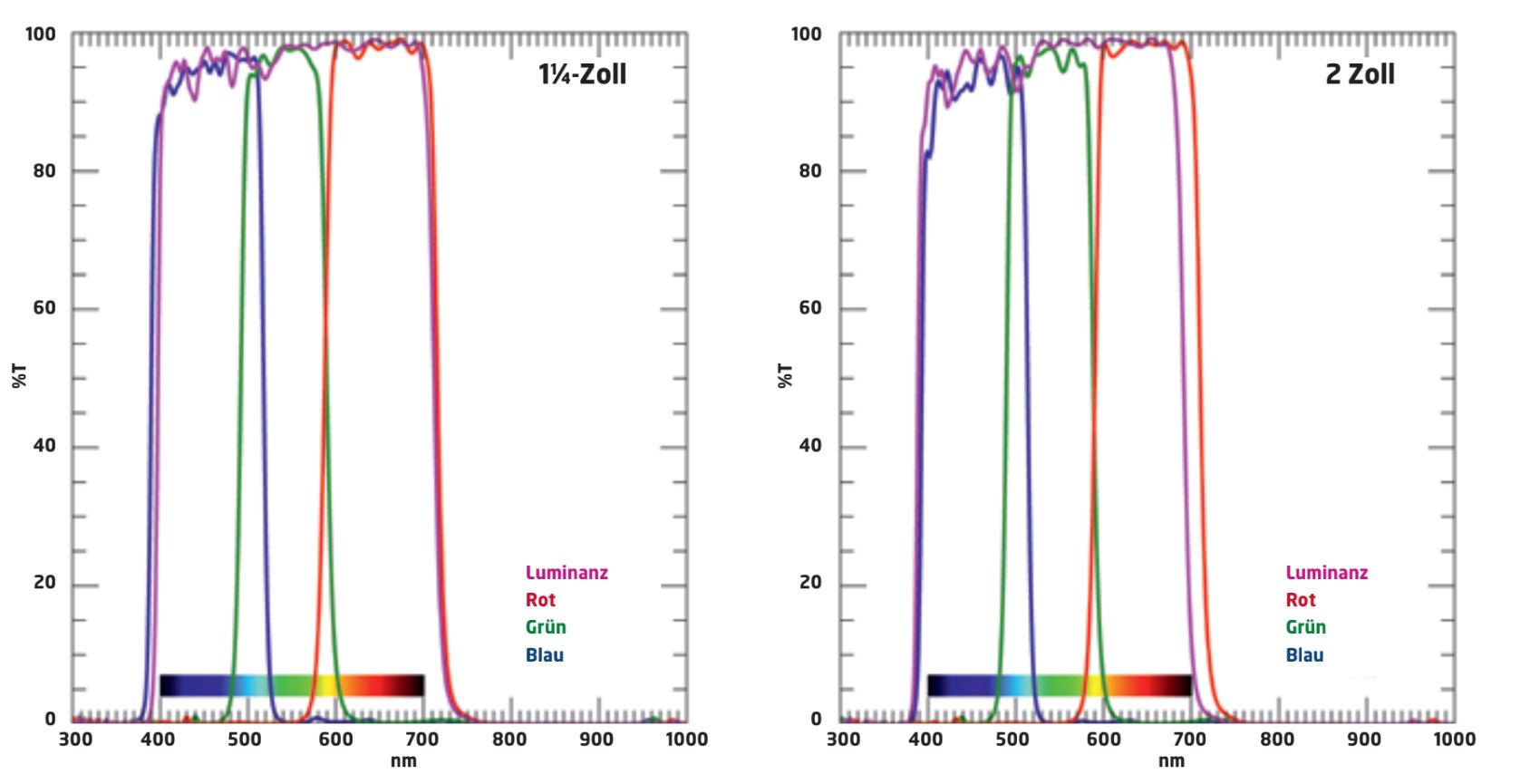 Transmission diagrams of the luminance, red, green, and blue filters.
Transmission diagrams of the luminance, red, green, and blue filters. 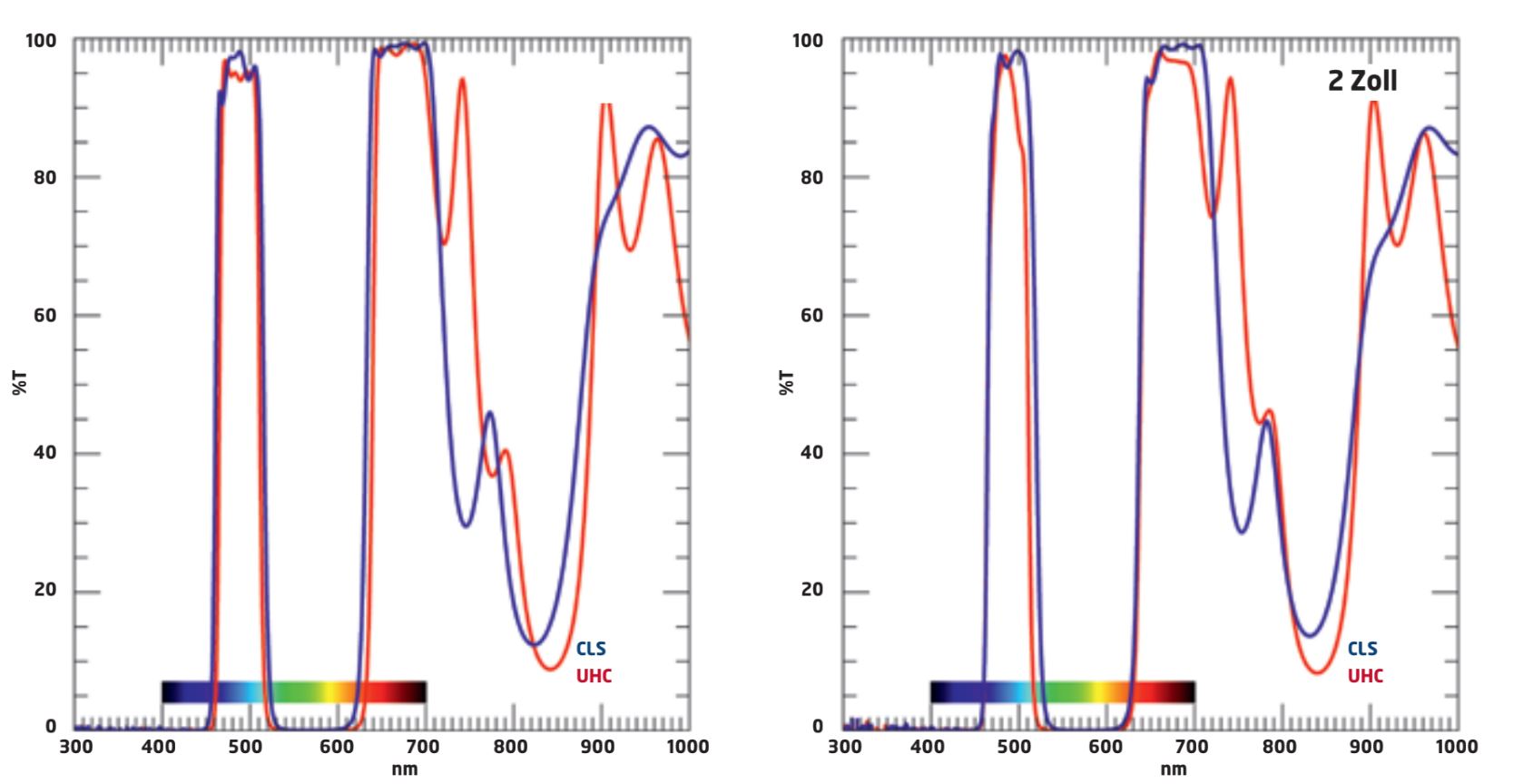 Transmission diagrams of the UHC and CLS filters.
Transmission diagrams of the UHC and CLS filters. 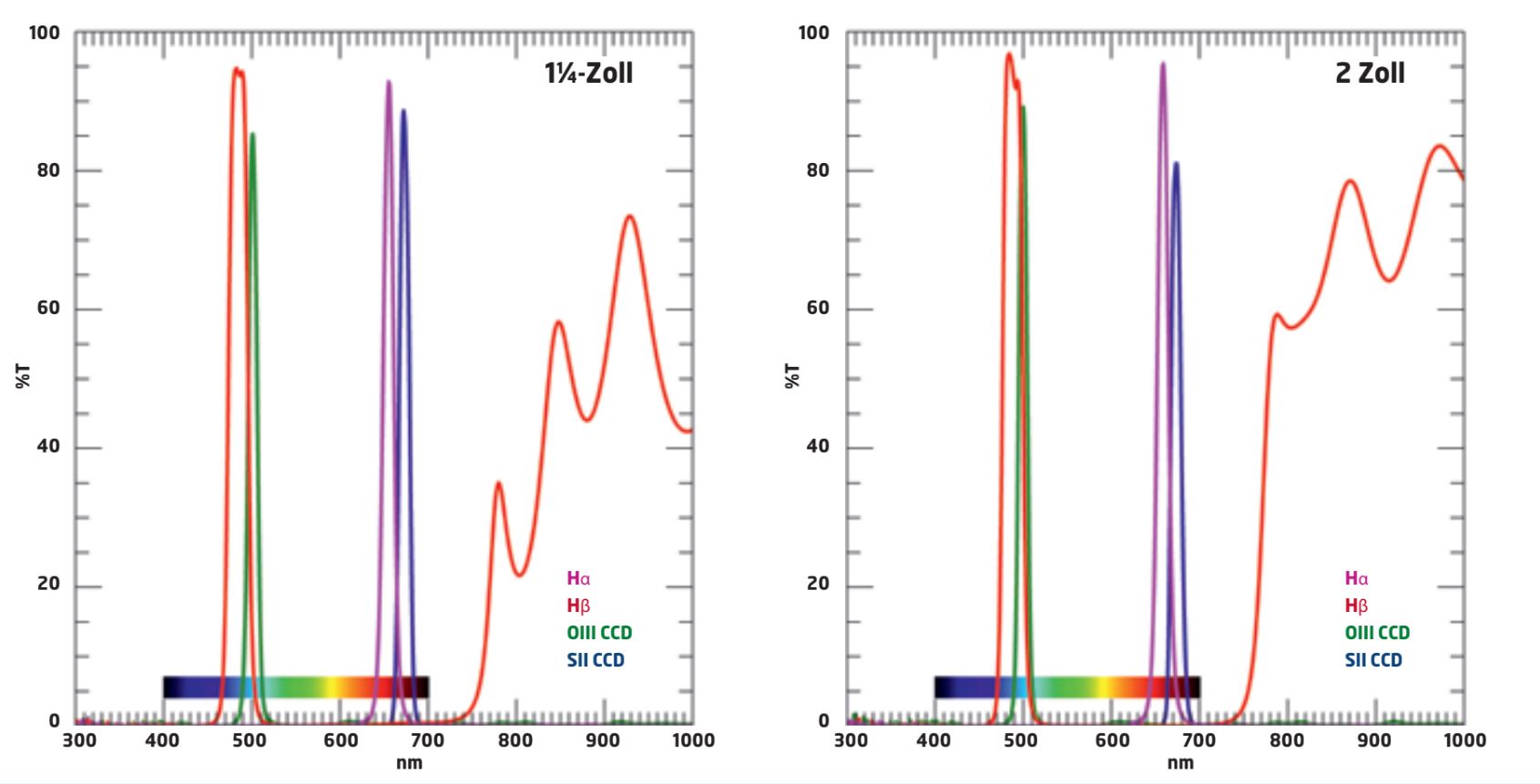 Transmission diagrams of the Hα, Hβ, OIII CCD and SII CCD filters.
Transmission diagrams of the Hα, Hβ, OIII CCD and SII CCD filters. The bottom line
The Pro series of filters leave a solid impression. In addition to very good workmanship, they demonstrate visual and photographic properties typical of filters in this price segment. In the test for reflections or halos and parfocality, the LRGB set showed no negative peculiarities. The other filters are also parfocal and can therefore be used together on a filter wheel for visual observation.
In addition, all visual filters maintain edge sharpness and did not affect the image. Experimentally, CLS and UHC can also be used for objects other than nebulae, making use of their artificial light blocking properties. The OIII filter can be successfully used visually with instruments with an aperture of 8 inches or more, but its main application is for use in photography. Since the Hα, Hβ and SII filters could not be tested practically, the assessments here are based on the laboratory evaluations of the transmission curves, which performed very well, with a small deduction in points due to the Hβ filter’s high infrared transmission.
Omegon has successfully closed a gap in its own product range with its new Omegon Pro Filter series. Solid workmanship and very good optical properties, which are transparent thanks to the test protocols, mean that the filters in this series are recommended for observers who attach importance to quality and optical performance, whilst at the same time accepting a modest price premium compared to filters from the standard series.
